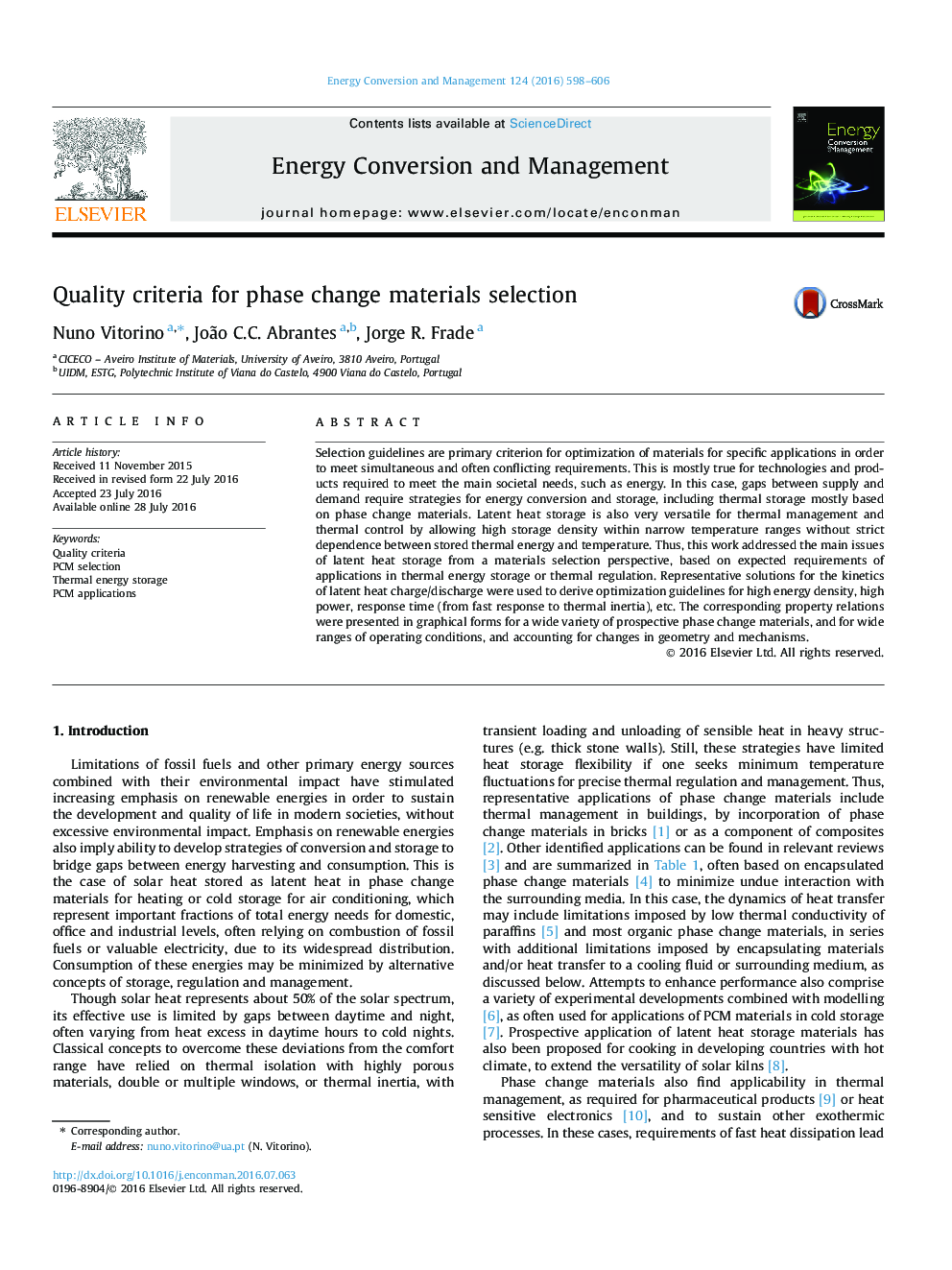| Article ID | Journal | Published Year | Pages | File Type |
|---|---|---|---|---|
| 765013 | Energy Conversion and Management | 2016 | 9 Pages |
•Selection criteria of phase change materials for representative applications.•Selection criteria based on reliable solutions for latent heat transfer.•Guidelines for the role of geometry and heat transfer mechanisms.•Performance maps based on PCM properties, operating conditions, size and time scales.
Selection guidelines are primary criterion for optimization of materials for specific applications in order to meet simultaneous and often conflicting requirements. This is mostly true for technologies and products required to meet the main societal needs, such as energy. In this case, gaps between supply and demand require strategies for energy conversion and storage, including thermal storage mostly based on phase change materials. Latent heat storage is also very versatile for thermal management and thermal control by allowing high storage density within narrow temperature ranges without strict dependence between stored thermal energy and temperature. Thus, this work addressed the main issues of latent heat storage from a materials selection perspective, based on expected requirements of applications in thermal energy storage or thermal regulation. Representative solutions for the kinetics of latent heat charge/discharge were used to derive optimization guidelines for high energy density, high power, response time (from fast response to thermal inertia), etc. The corresponding property relations were presented in graphical forms for a wide variety of prospective phase change materials, and for wide ranges of operating conditions, and accounting for changes in geometry and mechanisms.
Graphical abstractFigure optionsDownload full-size imageDownload as PowerPoint slide
